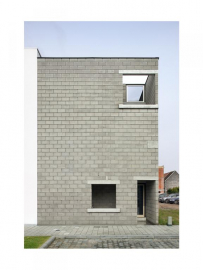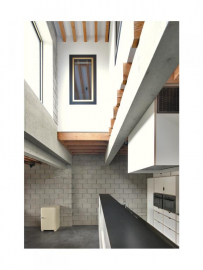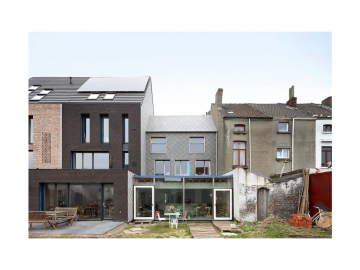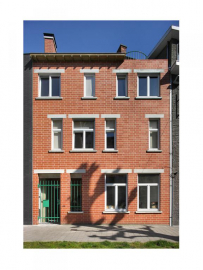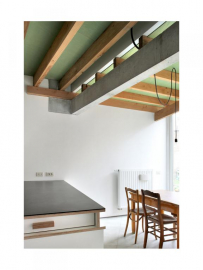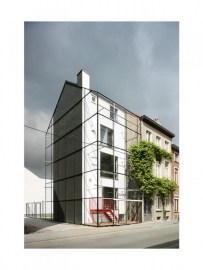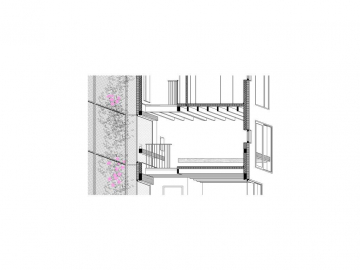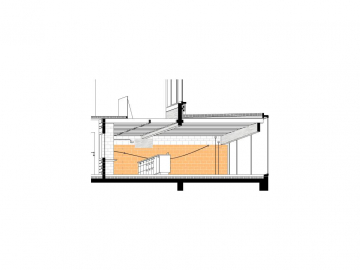Kavel Houses
The ambitions of AG SOB (Ghent Urban Development Corporation) go further than developing new urban districts and redrawing the existing urban fabric. Their Kavel project is an exercise in the precision implementation of small-scale housing following unconventional principles.
The corporation seeks opportunities within the urban fabric to build new homes, either individually or in groups ranging from two or three to seven or eight. They do not manage everything themselves. Instead they offer the site to a young or otherwise suitable family, selected from a number of candidates, as a package complete with a selected architect, on highly advantageous terms. The deal is also bound by stringent conditions for financing and programme requirements: a high grade of sustainability is required on a practically impossible budget.
Four plots, or to be precise four families, declare themselves. Four houses are drawn. At first sight four identical houses, but none of them is exactly the same. Not only are the plots different but the families too. Actually they may really be four different problem situations. Like any other assignment, they have nothing to do with one another. Or maybe they do.
House W is a simple stack of rooms. The house is pure white. Defined design aims are always points of departure, never targets in their own right. But deviations from those aims are only feasible when they are unambiguous. In the case of House W, the stacked rooms benefit from the whiteness. The adopted stacking height makes it possible to halve the depth of the dwelling. This shape is surrounded by a full-height garden fence, which follows the given plot contours but leaves room for a front garden and a back garden, with the built volume in the middle.
House M was the first in a series of houses which were an exercise in the materiality of the shell; in how everything could fit together. Every brick bond was drawn. But when something did not fit exactly, an unexpected choice might be made; something that did not fit was not forced to fit. A beam to be positioned on a spread support on a wall that follows a stepped line, positions itself as it is: everything is slightly shifted. The slight shift is what makes it visually interesting. This inspires the decision, in another situation, to allow wooden beams to simply lie on a transverse concrete beam and admit sunlight between them.
House A continues the exercise. The shell itself provides colour. House M sometimes has a pinkish diffused light and sometimes yellowish. The terracotta colour of the large utility bricks is slightly different every time, like shades of natural materials. House A alternates the practically constant colour intonation of concrete blocks with wooden beams and floors, and white walls. The pure play of light is paramount here. Concrete blocks absorb. The walls reflect. The wooden beams add just enough colour.
House T is one of four houses in a Kavel ensemble which have to deal with a bizarrely tapering site due to the adjacent party walls, reaching a point at the bottom of the garden. House T is at the right side of the ensemble. A rear wall which retreats on each successive storey and a roof disconnected from the party wall of the house on the right may form the most explicit implementation of designing in the section. This design lets the light penetrate everywhere, so turning the tapering plot shape to advantage.
Kavel Tichelrei: 166 m² (LOC: 51.061450, 3.723372)
Kavel Arbed: 229 m² (LOC: 51.044856, 3.753988)
Kavel Warande: 120 m² (LOC: 51.058765, 3.736397)
Kavel Meulestede: 170 m² (LOC: 51.074769, 3.730538)

